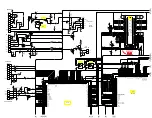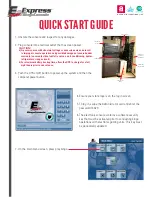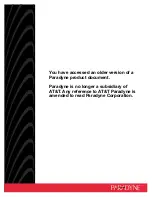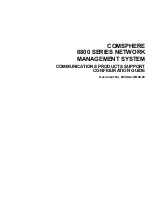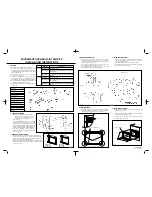
O P E R AT I N G I N S T R U C T I O N S | Bulkscan®
8014829/ZV98/2018-05-07| S I C K
Subject to change without notice
9 9
APPENDIX
13
Appendix
13.1
Telegram reference
To work with telegrams, please read the following sections:
•
Configuration of the Bulkscan® using telegrams (see "7.2 Configuration of the Bulk
scan® using telegrams“ on page 62).
• Notation and examples (see below).
The available telegrams are divided as follows based on the structure of the software
user interface:
• Logging in to the sensor/Logging out of the sensor (see "13.1.2 Logging in to the
sensor/Logging out of the sensor“ on page 101).
•
Saving the configuration in the non-volatile memory (see "13.1.3 Saving the configu
ration in the non-volatile memory“ on page 102).
• Device information (see "13.1.4 Device information“ on page 102).
• Operating mode/Teach-in (see "13.1.5 Operating mode/Teach-in“ on page 102).
• Measured value (see "13.1.6 Measured values“ on page 103).
• Measurement (see "13.1.7 Measurement“ on page 103).
• System (see "13.1.8 System“ on page 104).
• Digital inputs (see "13.1.10 Digital inputs“ on page 106).
• Digital outputs (see "13.1.11 Digital outputs“ on page 106).
• Reference measurement (compensation function) (see "13.1.12 Reference measure-
ment (compensation function)“ on page 108).
• Service data (see "13.1.13 Service data“ on page 109).
• Error codes (sFA) (see "13.1.14 Error codes (sFA)“ on page 110).
13.1.1
Notation and examples
Notation
The individual telegram sections must each be separated by a space (ASCII code 32,
20 h). The Bulkscan® interprets the parameters transferred as follows:
• Parameters with a leading "+" or "–" are interpreted as a decimal value (ASCII nota-
tion).
• Parameters without a leading "+" or "–" are interpreted as a hexadecimal value (ASCII
notation).
•
The Bulkscan® interprets each parameter individually, i.e., the different notations
can be mixed within a telegram.
• All examples used in the following telegram lists refer to the CoLaA protocol.
Structure of the data
The data comprises a command, a variable name or a method name, as well as any
necessary parameters.
Request
<STX>
sMN
SetAccessMode
03
F4724744
<ETX>
Reply
<STX>
sAN
SetAccessMode
1
<ETX>
Frame
Method: Login to the sensor
Parameter: Authorized user
Parameter: Password
Frame
Command: Execute method






























